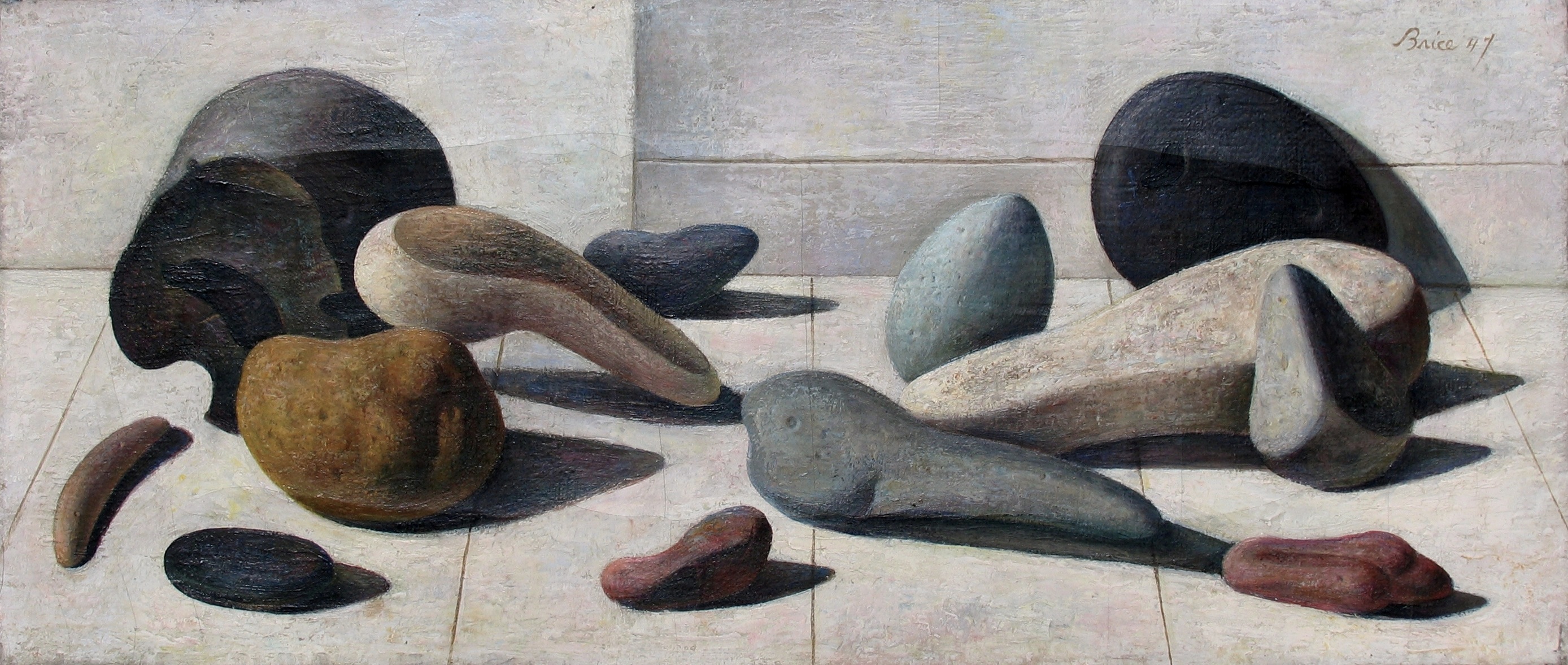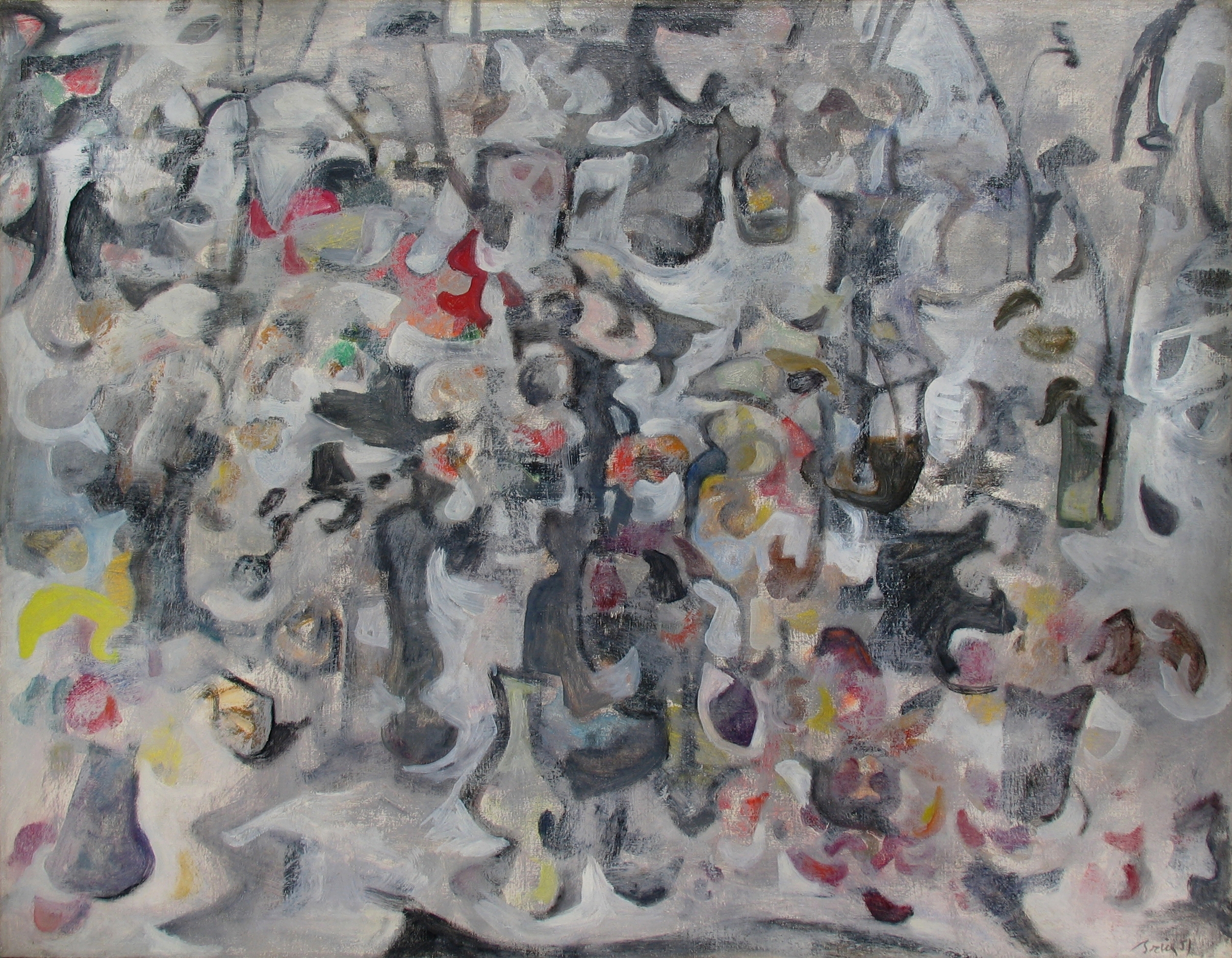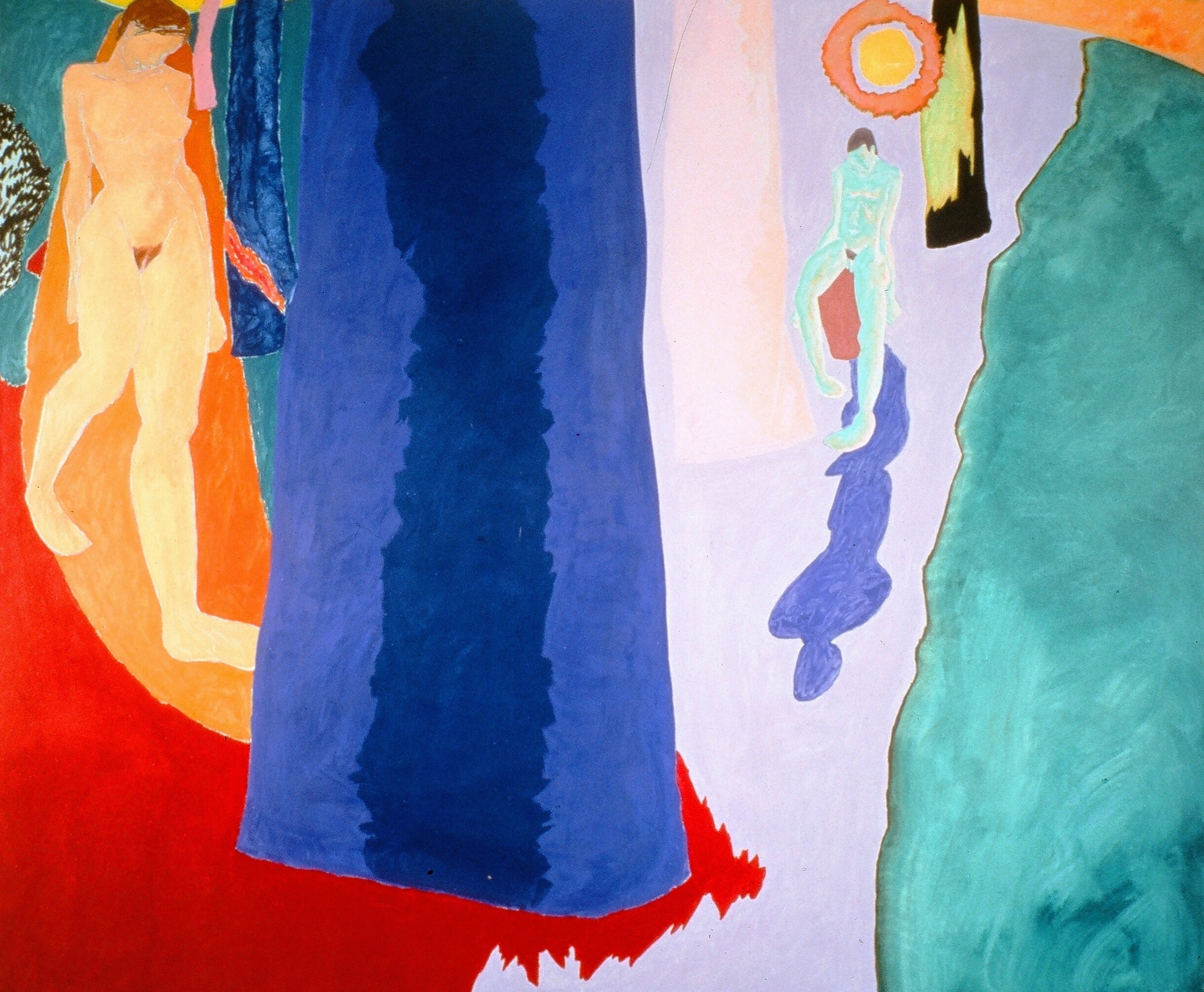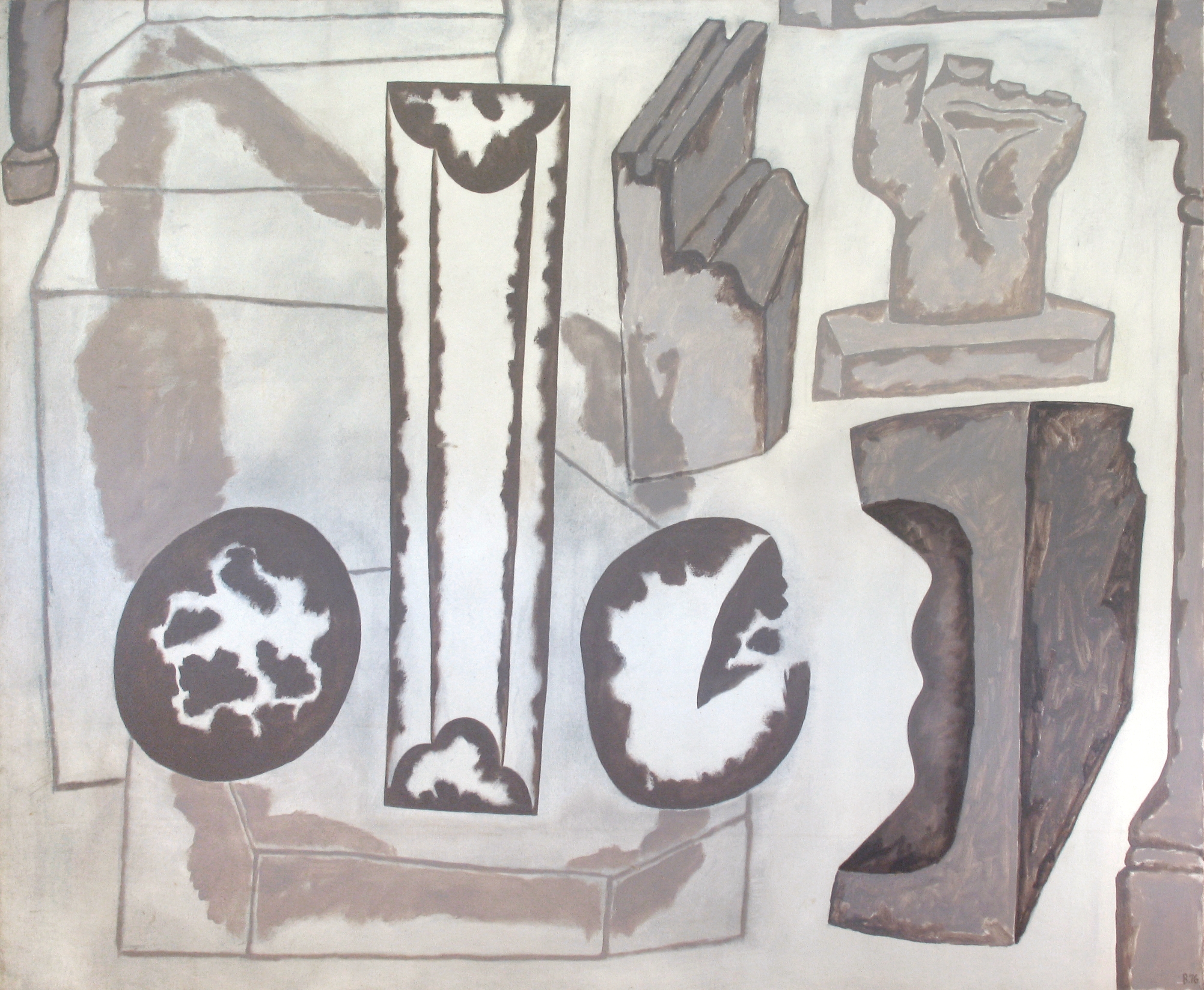
JK: You said very early on, about 1947, or perhaps I’m recalling a remark by a reviewer, that your interest lay in texture, in the restrained palette, and draftsmanship. Reproductions of your early work show you to have been concentrating on basic elements. And your later works show the consistency with which you pursued them. How did those interests form: Was it temperamental, was it a response to what you were looking at in the Thirties and Forties?
WB: Well I can remember that I went around to the galleries a great deal. I recall going to exhibitions of surrealists and Neo-Romantics, Dali, Berman, Bérard, Tanguy. I was usually in Botkin’s company. His interests lay in a different direction. He had strong reservations about Surrealism, and his affinity was for the French tradition.
WB: These things are now seen in retrospect. I’ve never been a programmatic painter. I don’t think I undertook work essentially as problem-solving. Not that I wasn’t always involved in certain formal issues. In 1947 I painted a number of small paintings based on an arrangement of sea rocks. I was living at the beach part of the time, and I would collect the sea rocks. I think that what fascinated me was that the color of a rock and its substance were inseparable. I remember breaking them open. I was thinking about the difference between applied color as opposed to this color inseparable from substance in the rock. I remember (though it seems a curious distance from what I was actually doing) that Piero della Francesca was of particular interest to me. I think what I found in rock coloration and form, the subtle nuance of color, ochre, olive green, slate-gray, gray-violet and black, was to the sculptural relief in a Piero. I found a similar restraint of color; ochre, olive green, slate-gray, gray-violet and black were to be found in those sea rocks and that there was the possibility of establishing a formal order of relationship. They were in my first New York exhibition at the Downtown Gallery. Although I felt a satisfaction in the realization of those paintings, I was unsettled: their containment, the careful quality of their ordering no longer reflected my sense of day-to-day experience. I didn’t know where next I’d go. When I returned to the Coast and the studio where I’d painted the paintings of sea rocks, there was a rose garden outside. And it had always been there! Though I’d been going through it for a number of years, the garden had not absorbed me. Suddenly I discovered that garden, and, because it was artificial, that is, planted there, it burst into bloom as though overnight. I found myself making watercolors in the garden because I felt those flowers were there so briefly. I had no idea what my eventual involvement would be. As I worked I saw that on one bush there would be a bud and a flower in bloom, and also a dying or dead flower. The idea of the cycle came to me. Now in retrospect, though even at that time, after about five years of working with those flowers, I realized that I had moved from one kind of implication of alteration of form in nature, the sea rocks that turn slowly beneath the water, to this fleeting cycle of life in flowers. I also had in the studio tables with flowers, and some of the flowers had been on them for three or four years, while others had been brought in fresh that morning.



